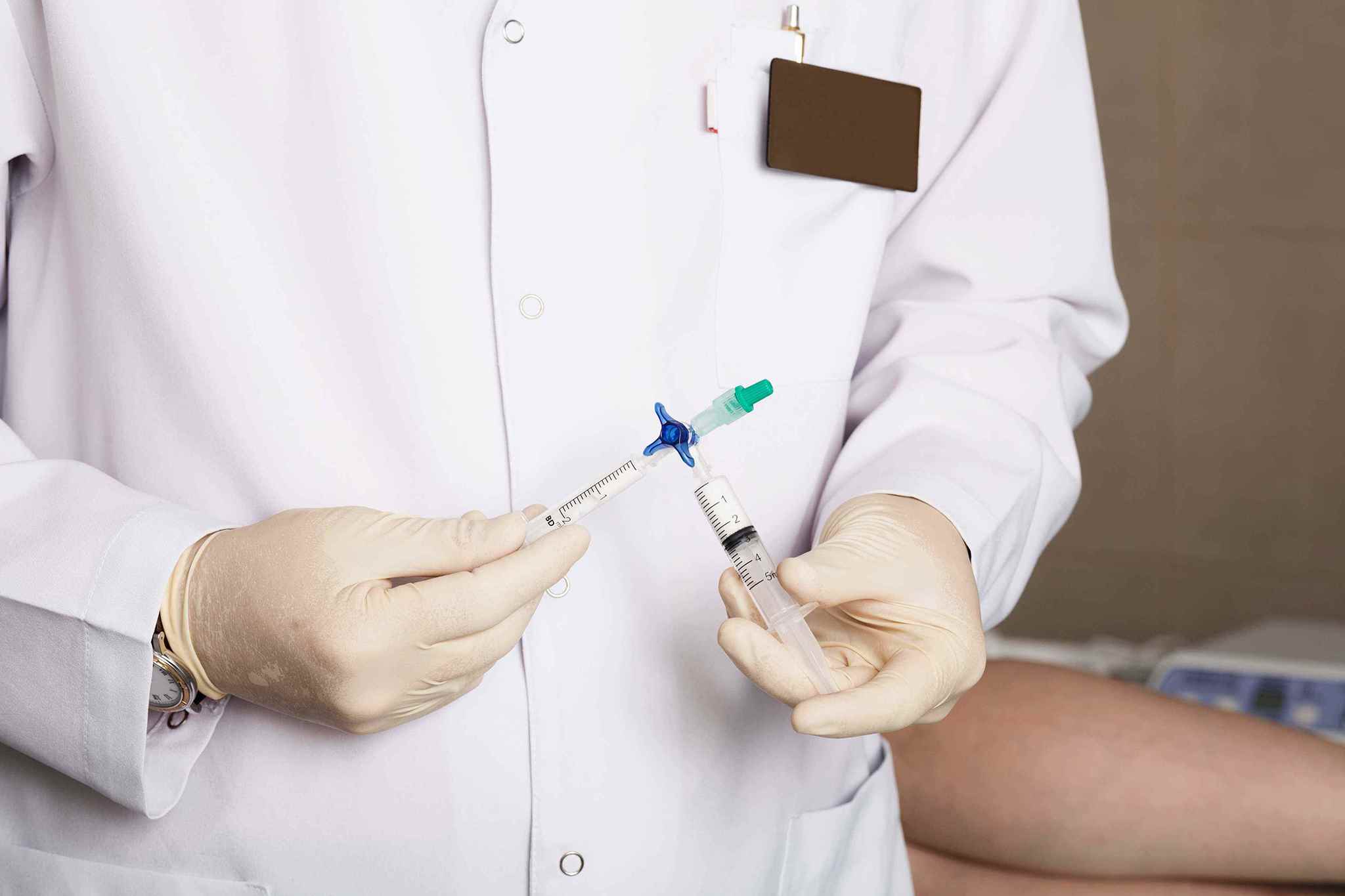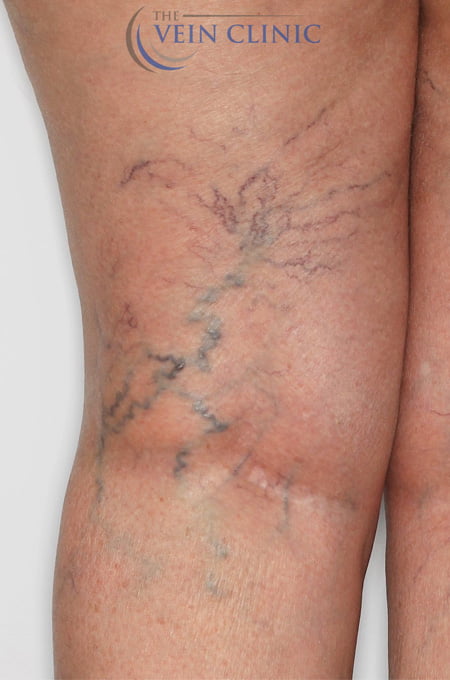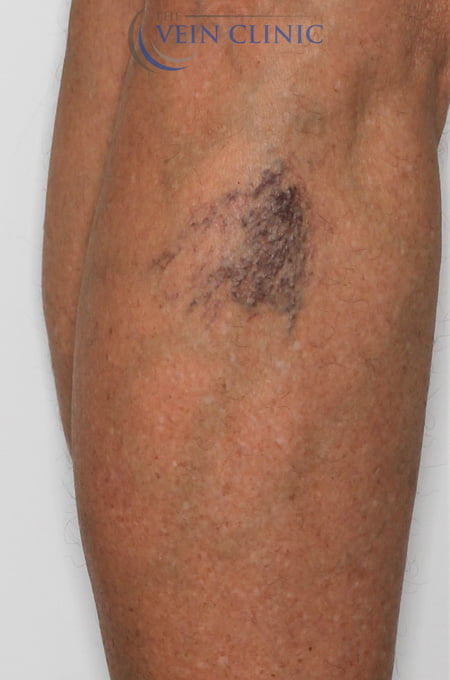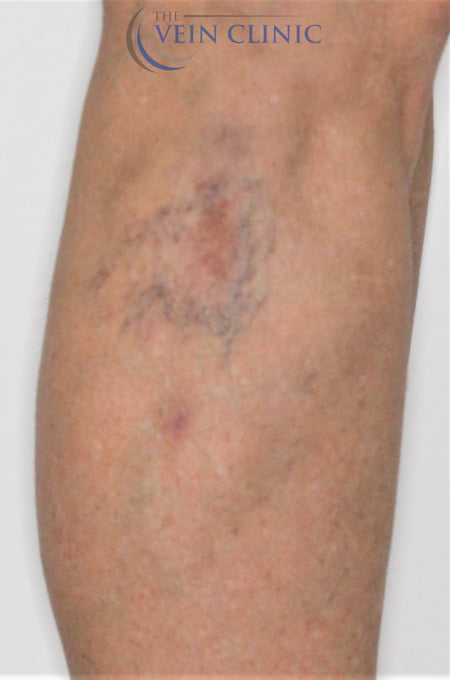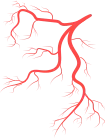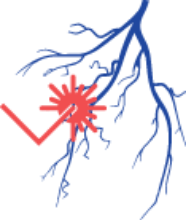Perth's Leading Specialist in the Treatment of Varicose Veins
Dr Luke Matar | MBBS, FRANZCR, FACP
What is Ultrasound-Guided Foam Sclerotherapy?
Ultrasound-guided foam sclerotherapy (UGFS) is a treatment option for venous disease in the lower limbs, used to treat bulging varicose veins caused by malformations of the blood vessels due to venous insufficiency also known as venous reflux.
Sclerosant solution makes the lining of the affected veins collapse and harden, and they then seal off and are sometimes later resorbed by the body.
This method of varicose vein treatment circumvents the need for varicose vein stripping surgery and has evolved over the last 20 years to become a greatly refined technique, due to technological advancements in medical ultrasound.
The ultrasound-guided foam sclerotherapy procedure does not require hospitalisation and recovery time is minimal. Patients do however need to wear compression stockings and walk daily to promote blood flow to prevent superficial venous thrombosis and skin changes.
Why Choose Foam Sclerotherapy
For Varicose Veins

Effective Treatment for Smaller Veins
As a complement to laser treatment, UGFS is especially useful for recurrent varicose veins and veins that are too small to physically remove via ambulatory phlebectomy. UGFS is a very effective treatment when performed on suitable veins 2.5mm – 4mm in diameter.

Back to Work
The Next Day
Foam sclerotherapy is a highly tolerable procedure and requires no interruption to your daily activities. Compression stockings are required for 2 weeks after treatment but no downtime or time off work is necessary.

Rapid Symptom
Relief
Our treatment process is completed in as little as four weeks, meaning you can experience the benefits of symptom relief after your first treatment. Please note that cosmetic improvements from sclerotherapy will continue to develop over time.
Foam Sclerotherapy
Before & Afters
Treatment Method
Ultrasound-guided Ambulatory Phlebectomy, Ultrasound-guided Foam Sclerotherapy & VenaSeal
Read MoreHow Does Foam Sclerotherapy Treatment Work
Ultrasound-guided foam sclerotherapy refers to the injection of sclerosant material into abnormal veins under ultrasound guidance using a very fine needle.
Read MoreThe procedure
What to Expect During & After Your Treatment
Prior to your treatment, you will first see our sonographer, who will carefully mark out the area to be treated using ultrasound. You will be given the opportunity to listen to your favourite music, read a book or simply chat with our friendly nurse whilst Dr Matar does his magic.
If you’re feeling anxious or nervous about the procedure, or if you have a low pain tolerance, please let us know ahead of time and we can arrange for our nurse to give you a pre-med mix of painkillers and a light sedative to relax you prior to the treatment.
Foam is injected via a needle catheter into the vein under ultrasound guidance. Ultrasound is used to guide injections of foam sclerosant solution directly into the target vein. The duration of treatment is usually less than 30 minutes. There may be some minor discomfort with the administration of the numbing agent. Dr Matar uses specialised ultrasound-guided nerve blocks to minimise discomfort.
The number of veins treated in one foam sclerotherapy session is based on the size and location of the veins. Usually, several injections will be needed along the vein to ensure that the targeted vein collapses completely. As the session progresses, the effect of each individual injection is seen through ultrasound, and so ensures the safety of any adjacent blood vessels.
Read MoreRecovery Post Treatment
Following ultrasound-guided foam sclerotherapy treatment, there can be some side effects. Normal side effects of foam sclerotherapy include:
- Itching
- Bruising
- The appearance of brown lines
- Inflammation
- The appearance of new blood vessels at the site of injection
- If the solution is injected into larger veins, they may become hard and lumpy. These side effects can be treated with aspiration or ‘blood release’ via needle.
How to Find the Best Foam Sclerotherapy Treatment in Perth
What Makes the Vein Clinic Different?
Just because the treatment offered at a vein clinic is called foam sclerotherapy, doesn’t mean you will receive equal treatment across all clinics.
The Vein Clinic differs from its competitors not only in our level of expertise and experience but in every detail of how we operate and perform our world-class treatments.
Our modified technique of performing foam sclerotherapy under precise ultrasound guidance is a highly advanced improvement on the existing treatment system. The use of nitrogen-free foam significantly reduces the possible complications and side effects, meaning you’ll experience the safest and most effective version of this treatment possible.
We use UGFS as an adjunct treatment in combination with EVLA and/or UGFP, and not a “one size fits all” treatment type. Our combination of specialised techniques reduces the average number of UGFS treatments to 1.5 from the standard 3 seen elsewhere. These differences alongside our expertise, experience and passion, means you won’t find a higher quality treatment elsewhere.
Do I Need Foam Sclerotherapy Treatment
For Varicose Veins?
You could benefit from ultrasound-guided foam sclerotherapy if you experience any of the following vein problems.
Other Minimally Invasive
Varicose Veins Treatments
Frequently Asked Questions
What is Ultrasound-Guided Foam Sclerotherapy?
Ultrasound-guided foam sclerotherapy is an improved method of sclerotherapy that uses ultrasound to ensure precise placement of the sclerosant and “foaming” of the liquid sclerosant, to improve efficacy of the procedure.
The foam sclerosant solution is injected into the vein which causes vein spasm and inflammation in the vein walls. This process leads to scarring and closure of the treated vein. The blood is then rerouted to healthy veins. Over the next few months, the veins will undergo a sclerotic process where they gradually scar down and are often absorbed by the body.
What veins can be treated with foam sclerotherapy?
Foam sclerotherapy is a minimally invasive treatment that is relatively inexpensive and can be an effective stand-alone treatment if the abnormal varicose veins if they are fairly small.
Most commonly however it is a secondary treatment used in addition to laser and or phlebectomy.
It works well for veins less than 4mm in diameter and poorly for veins greater than 8mm in diameter, with variable results for veins 4-8mm in size.
If foam sclerotherapy is performed on veins that are too large it is likely that it will not be effective long term, and the veins will reopen and become painful, lumpy, stain, and require re-treatment in the future.
Is it painful?
No different to a simple needle injection, although many injections are required. If you are highly needle phobic, please mention this to our friendly team to discuss your options.
How long does the procedure take?
A session of sclerotherapy typically takes around 30 minutes.
How many treatments will I need?
This will be very dependent on the nature of the vein problem and desired “end point” of treatment, i.e. medical vs cosmetic motivation.
Many sclerotherapy clinics say 3 UGFS treatments are required on average (range 1-6 treatments). Because we use foam sclerotherapy largely as an additional rather than primary treatment, on average we perform 1.5 sessions per leg.
The sclerotic process takes time so you must be patient and allow your body to fully heal between each stage. The body can take up to 10mL of the sclerosant solution in a single sitting. What we can achieve with this 10mL depends on how many veins you have requiring treatment; therefore, multiple sessions may be required.
What are the side effects of Ultrasound-Guided Foam Sclerotherapy?
Blood can become trapped in the dying vein and cause a lumpy area of redness. This will resolve over time, but we often speed recovery with ultrasound-guided aspiration under local anaesthetic and recommend several creams to assist the healing process.
Staining can occur in 20-30% of patients and is more common with very superficial veins and in patients with dark skin. It is usually minor and resolves itself over a 6-12 month period. We recommend you avoid sun exposure for 3 months after treatment. For this reason, we recommend pursuing treatment that is primarily cosmetically motivated during the winter months.
Get In Touch
Please send us an email and we’ll be in contact very soon or alternatively, call us on (08) 9200 3450.
If you are unsure of what vein condition you may have, assess your legs with our online tool.
If you are looking for cosmetic spider vein treatment only, please click here.

